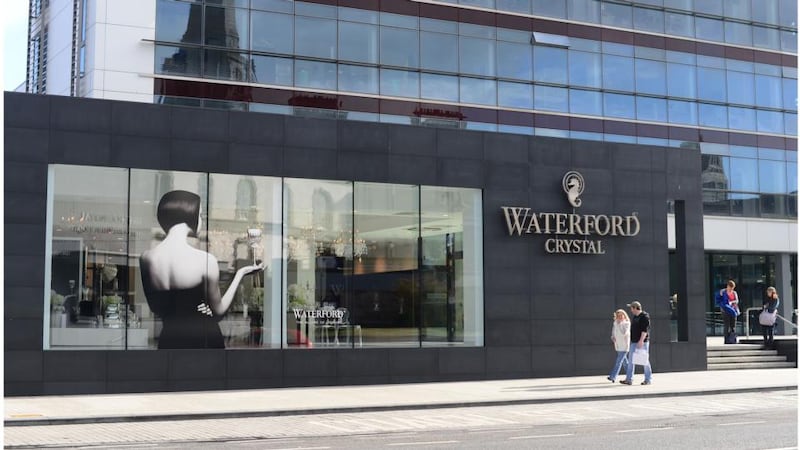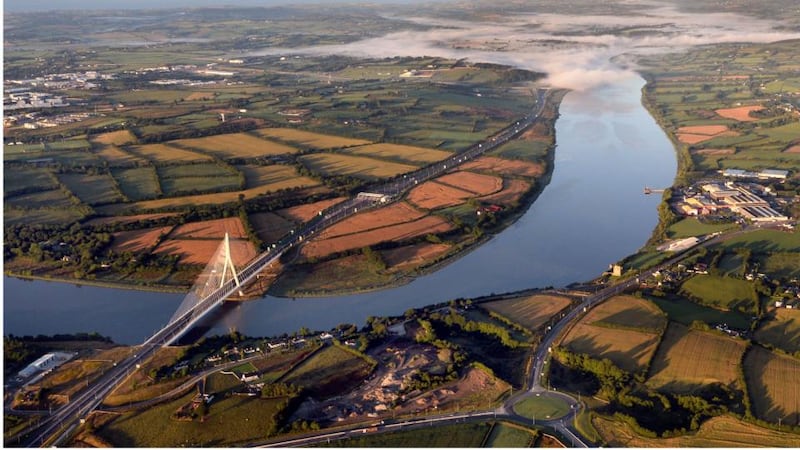Waterford bills itself as Ireland's oldest city. Founded in 914 by Regnall, a Viking adventurer, whose name lives on in Reginald's Tower, its golden era was in the 18th century when the city's two great cathedrals were built – both designed by John Roberts and now officially "twinned" with each other.
But Waterford is underperforming now. With unemployment at 19 per cent – significantly higher than other Irish cities – its relatively small scale has resulted in a “failure . . . to emerge as ‘leader’ of the region in terms of population, industry, retail, tourism, etc,” according to DKM economic consultants.
In their exhaustive analysis of Waterford’s strengths and weaknesses – commissioned by the city and county councils in advance of their merger later this year – the consultants found there was a “low level of confidence” in the city, which had “failed to reach its potential” as the southeast’s driver.


One of its strengths is the lesser-used M9 motorway – built at the behest of former environment minister Martin Cullen – which delivers a journey time of one hour and 50 minutes to Dublin, easily beating the train. Even on busy days, this toll-free motorway operates at less than a quarter of its capacity.
Road infrastructure
A gargantuan concrete pylon, similar to the one on the Luas bridge in Dundrum, announces Waterford's ring road – the N25 – which was so over-designed that traffic levels haven't yet reached half of its capacity. But nobody in Waterford is complaining about this grade-A roads infrastructure.
Three-quarters of commuters drive to work and there is a startling lack of provision for cyclists. Bus services (few and far between) need to be reviewed, according to DKM, with better cycle, pedestrian and bus connections to the city centre from Plunkett station, Waterford Institute of Technology and outlying employment locations.
Heavy traffic on the ugly Rice Bridge and its even uglier approaches makes for an intimidating journey to the railway station if you’re on foot. One of the really good ideas kicking around in Waterford would involve relocating the station further east, on the Suir’s north quay, with a Derry-style pedestrian bridge to the city.
The north quay, now occupied by derelict mill buildings and silos, was the subject of an international architectural competition – promoted in 2002 by Martin Cullen – for an urban design masterplan. But the scheme was so ambitious that it never got off the ground, and the property crash and recession put an end to it.
In the longer term, the north quay is seen by DKM as having potential for a “riverside village – south-facing and often sheltered from the prevailing winds, with waterside restaurants, festival shopping, boutique hotels, apartments, offices, ateliers and galleries beside a riverside boardwalk”. But the market “is not ready for it yet”.
One of the city’s perennial problems is it never had control over the extended urban area. Apart from a sliver of the north bank within the city limits, the rest of it is in Co Kilkenny, and its county council had no problem approving boomtime plans for a shopping centre at Ferrybank; it has yet to open.
The big slab on a hill that was once the Ard Rí Hotel, with its grandstand view of Waterford, is partly in Co Kilkenny. Abandoned in 2005 and vandalised, it has since been “wrapped” – Christo-style – and would make a brilliant projection screen, or an apartment block with one of the finest aspects in Ireland.
Waterford vs Kilkenny
Kilkenny County Council has consistently objected to any proposal for an extension of Waterford, arguing, "Kilkenny county and its people have a unique and clear social, cultural and sporting identity". DKM disagreed, while saying that "achieving this will not be easy and will require a change of attitudes".
They said creating a viable “Waterford City Area” by incorporating part of Co Kilkenny is one of a series of “high-level interventions or ‘game-changers’ that will help to reposition Waterford as a top-class micro city at European level, with a combined population of 114,000, and as the key driver of the South East Region”. As a fallback position, they recommended Minister for the Environment Phil Hogan, who represents Kilkenny, should use his power under section 9 of the 2000 Planning Act to require the Waterford and Kilkenny councils to deliver an agreed “metropolitan area joint plan”. But there is no sign he will.
The DKM strategy for Waterford city and county highlighted the need to put economic development “at the core of the new unified council’s activities and one of the key enabling steps in the reorganisation will be the establishment of an economic development unit within the new council structure”; this is now being done.
City and county manager Michael Walsh showed his mettle in 2009 when Waterford Glass – a major employer synonymous with the city – closed. Within a year, he put together a partnership of the council, redundant glassblowers and a US equity fund to set up the House of Waterford Crystal.
Sparkling glassworks
Right opposite the Bishop's Palace – also beautifully restored by the council to show the treasures of Georgian Waterford – the smart new shop and adjoining glassworks are the city's major tourist draw, expected to attract 180,000 visitors this year. Walsh's "gamble" has paid dividends, with major spin-offs for the city.
Another “game-changer” recommended last May by the Waterford Re-Organisation Implementation Group involves merging Carlow and Waterford institutes of technology to create a Technological University of the southeast because of the “enormously transformative impact” it would have for Waterford and the region.
The group – chaired by Seán Aylward, former secretary-general of the Department of Justice – also recommended spending a “modest” €2 million to extend the runway at Waterford Airport, so that it could cater for 100-seater planes as this would “significantly enhance international access by tourists and business travellers”.
As DKM noted, the airport “has been struggling in recent years due to the economic downturn”, with Aer Lingus regional services to London discontinued in January 2013 and passenger numbers down by 44 per cent from a peak of 139,000 in 2008. But there are hopes the London link will be reinstated later this year.
Waterford hosts many big festivals, including Tall Ships, Spraoi, Harvest and Winterval, so there are plenty of reasons to visit. However, DKM found its retail offer is “below par” and needs to be augmented by speciality food shops, arts and crafts outlets and a more vibrant “night-time economy”.
Engine of growth
One of the key sites with development potential, around Michael Street, is under the control of Nama. Currently derelict, it was seen by the consultants as having the potential to "deliver a large retail space in the city centre", contributing to urban regeneration and the goal of making it "the engine of growth" for the region.
They even recommended that the rather jaded City Square shopping centre, just outside Waterford’s Viking Triangle, be redeveloped in the context of a city centre management strategy. If it does fall to the demolition crews, it will have had a short life indeed, compared to Reginald’s Tower.










